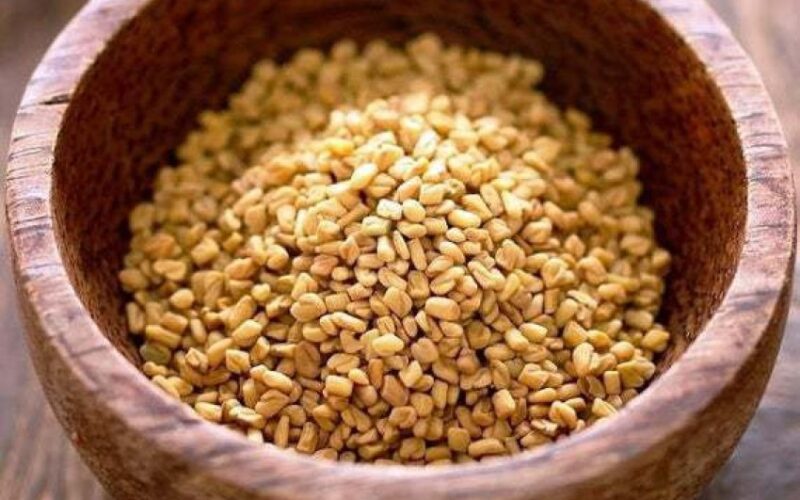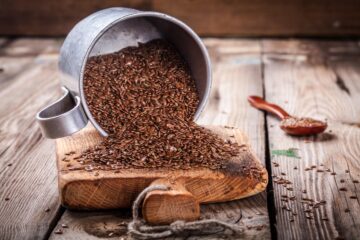Name:
Fenugreek, scientifically known as Trigonella foenum-graecum, is an annual plant belonging to the Fabaceae family. Commonly used both as a herb (leaves) and spice (seeds), it is known by various names such as Methi in Hindi and Semen Trigonellae. This herb is native to southern Europe and the Mediterranean region and is cultivated in areas like central and southeastern Europe, western Asia, India, and northern Africa. Fenugreek grows up to 2-3 feet tall, featuring a strong odor and small pale yellow flowers. The seeds are aromatic, yellowish-brown, and develop in curved yellow pods.
For cultivation, fenugreek should be sown from seeds directly into the garden after the last frost, as it does not transplant well. It prefers well-draining, neutral to slightly alkaline soil (pH 6.5 to 8.2) and requires at least 4-5 hours of direct sunlight daily. Regular watering is necessary, but the soil should not be waterlogged. In terms of harvesting, fresh leaves can be stored in the refrigerator for up to a week or frozen for up to 10 months. Leaves are used both fresh and dried in cooking or tea.
Description:
Fenugreek has a variety of uses:
- Culinary Uses: Its seeds, which have a maple syrup-like smell and taste, are used in cooking, in spice blends, and as a flavoring agent in foods, beverages, and tobacco. In North Africa, Asia, and southern Europe, it has traditionally been used for flavoring foods.
- Medicinal Uses: Traditionally, it was used for diabetes management and to increase milk supply in breastfeeding women. Today, it is promoted as a dietary supplement for diabetes, menstrual cramps, and to stimulate milk production during breastfeeding. However, the quality of evidence regarding its effectiveness in these areas is limited, with some studies suggesting it may help lower blood sugar levels in people with diabetes or prediabetes.
- Diabetes Management: Fenugreek has been traditionally used as a treatment for diabetes in Asia. Clinical trials have shown that it can acutely lower postprandial glucose levels. A meta-analysis of these trials, focusing on markers of glucose homeostasis, found that fenugreek significantly changed fasting blood glucose, 2-hour postload glucose, and HbA1c levels as compared with control interventions. Notably, this effect was more pronounced in studies that administered medium or high doses of fenugreek to persons with diabetes. However, it’s important to note that most of these studies were not of high methodological quality, indicating a need for more rigorous research in this area. The complete details of the study can be found at Nutrition Journal.
- Breast Milk Production in Lactating Women: Fenugreek has been used traditionally to stimulate milk production during breastfeeding. A network meta-analysis comparing fenugreek administration to other galactagogues found that consumption of fenugreek significantly increased the amount of breast milk produced versus placebo. This study highlights the potential effectiveness of fenugreek as a galactagogue compared to placebo and control groups. However, the effect of fenugreek was found to be inferior to other substances like Coleus amboinicus Lour and palm date. More information on this analysis is available at PubMed.
- Menstrual Cramps (Dysmenorrhea): A study focused on the effects of fenugreek on primary dysmenorrhea, a prevalent disorder that deteriorates the quality of life for many. This double-blind, randomized, placebo-controlled trial evaluated the impact of fenugreek seeds on the severity of primary dysmenorrhea among students. The study found that fenugreek seed powder significantly reduced pain severity and decreased systemic symptoms of dysmenorrhea, such as fatigue, headache, nausea, and lack of energy, with no reported side effects. The full study can be accessed at PubMed.
- Lipid Profile Improvement: Fenugreek has been found to have lipid-lowering properties. A meta-analysis aimed at evaluating the effect of fenugreek supplementation on human serum lipid profile included fifteen randomized clinical trials (RCTs) with 281 cases consuming fenugreek. The results indicated a significant impact of fenugreek supplementation on lowering total cholesterol, low-density lipoprotein (LDL), and triglycerides (TG), while increasing high-density lipoprotein (HDL). The study also highlighted that fenugreek’s effect on TG and LDL reduction and HDL increase was more pronounced in diabetic subjects. This suggests fenugreek could be considered an effective lipid-lowering medicinal plant. Further details can be found at PubMed.
- Anti-Inflammatory and Anti-Arthritic Properties: Research has also shown that fenugreek possesses significant anti-inflammatory and anti-arthritic activities. A study on rats using petroleum ether extract of fenugreek seeds demonstrated reductions in inflammation in carrageenan and formaldehyde-induced paw edema. In another model of arthritis, fenugreek extract led to a reduction in the weight of cotton pellets and significant reductions in elevated liver enzyme activities. This indicates the potential of fenugreek in treating inflammatory conditions and arthritis, primarily attributed to the presence of linolenic and linoleic acids. For more information, visit PubMed.
- Potential Anti-Cancer Effects: Fenugreek has been explored for its anticancer properties. A study focusing on the anticancer properties and proteomic profiles of fenugreek seeds observed selective cytotoxic effects in vitro to various cancer cell lines, including T-cell lymphoma. The cluster analysis of proteomics data showed significant differences in the protein profile of the fenugreek used by a patient, which is different from other regional subtypes of fenugreek extract. This study underscores fenugreek’s potential usefulness in cancer prevention and treatment. Detailed findings are available at PubMed.
- Gastrointestinal Effects: While exploring fenugreek’s effectiveness and safety as a treatment for type 2 diabetes mellitus, a systematic review and meta-analysis noted that it significantly improved fasting blood glucose, 2-h plasma glucose, and HbA1c levels. Moreover, it enhanced lipid profiles (TC, TG, HDL-C) without significant changes in LDL-C and BMI. Importantly, no hepatic or renal toxicity was observed, and there were no severe adverse events associated with fenugreek. However, mild gastrointestinal side effects were noted in some studies, indicating its overall safety but also the need for caution in certain individuals. The comprehensive analysis can be accessed at PubMed.
Origin and Distribution:
Fenugreek is believed to be native to the Mediterranean region, Western Asia, and Southern Europe. Today, it is widely cultivated in countries such as India, Egypt, France, Spain, Turkey, Morocco, and Argentina.
Cultivation and Care:
Fenugreek prefers well-drained loamy soil with a neutral to slightly acidic pH. It requires full sunlight and moderate watering. Given its hardiness, it can tolerate slightly dry conditions.
Harvesting and Storage:
Uses:
Culinary Uses: Fenugreek seeds are widely used as a spice in Indian and Middle Eastern cuisines. They’re often ground into a powder and used in curry spice blends. The leaves, fresh or dried, are used in various dishes as well.
Medicinal Uses: Fenugreek has been used in traditional medicine to help with digestion and to promote lactation. Some research, such as a study from the National Library of Medicine (https://pubmed.ncbi.nlm.nih.gov/28266134/), suggests that fenugreek may help control blood sugar and cholesterol levels.
Other Uses: Fenugreek is also used in cosmetics and soap-making due to its ability to soothe and moisturize skin. It’s also been used in traditional rituals for blessings and to ward off evil.
Safety Information:
While generally considered safe, fenugreek should not be consumed in large amounts during pregnancy as it may stimulate uterine contractions. Some people may also be allergic to fenugreek. Always consult with a healthcare provider before starting any new herbal treatment.
Historical and Cultural Significance:
Fenugreek has a long history of use in Ayurvedic and traditional Chinese medicine. It has been used to treat a variety of ailments, from digestive problems to kidney issues.





